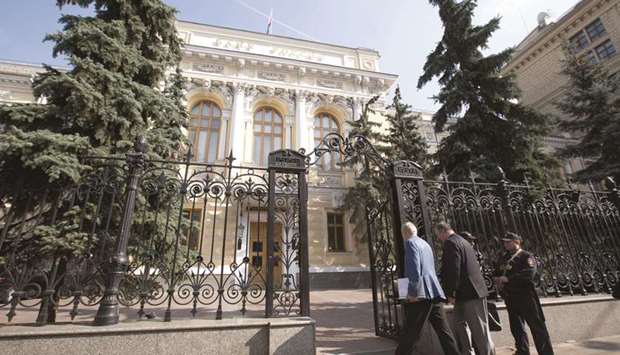The Bank of Russia thinks there’s a danger to saying too much. While it’s become more open about its policy options, the central bank isn’t ready to disclose its forecasts for the path of interest rates or minutes of internal debates, according to first deputy governor Ksenia Yudaeva.
“We’ve repeatedly discussed whether we should publish our rate outlook, but we doubt we need to do that,” Yudaeva said in an interview last week in St Petersburg during the International Financial Congress.
The risk is that the “market can interpret such information not as a forecast” of the most likely outcome at a given meeting but “as a commitment to change rates” in line with some kind of trajectory, regardless of what conditions prevail at the time.
Governor Elvira Nabiullina has made improved communication a key priority since she took over four years ago, even as she’s navigated the nation’s biggest currency crisis since 1998 and its longest recession this century. Starting last year, rate setters have begun to telegraph their policy intentions to better manage market expectations, going as far as revealing the exact options that will be under consideration. For next week’s meeting, however, the governor chose not to be so specific, only ruling out an increase in the 9% benchmark.
Many central banks publish accounts of their policy discussions and voting records. The US Federal Reserve also releases the so-called “dot plot” graphic, which contains rate forecasts of each of the 17 officials on the policy-setting Federal Open Market Committee, giving an early glimpse of their thinking about next steps.
The Bank of Russia has had a mixed run as it experimented with “forward guidance” – telling the public how rates will evolve in the future – catching most analysts by surprise with its decisions in March and April after a stretch of 10 meetings when the consensus correctly predicted every move.
That experience mirrors current frustrations of other central banks, whose efforts at guiding expectations have also arguably caused more confusion than clarity when shifts in the economy forced them to change their plans.
New research by the Bank of England’s staff suggested forward guidance may be even less effective than previously thought. The challenge for the Bank of Russia is how to tailor its language to the new reality of inflation stabilising near its target of 4%. The International Monetary Fund has advised it to elaborate on its medium-term goal “by either defining a horizon over which it plans to hit its target, or referring to its inflation horizon objective as an average over the medium-term.”
The central bank is now discussing whether to use a broader range as an inflation goal, according to Yudaeva. Under Nabiullina’s stewardship in 2013, it shifted to targeting a specific point because expectations usually were at the upper limit of a range, complicating the central bank’s job.
“A lot of questions arise with a corridor and it’s not clear where expectations will anchor,” Yudaeva said.
In any case, there will be no “automatic rule” going forward that will determine how policy makers will react to deviations in price growth, she said.
“We’ve started to speak a little more about the potential for rate cuts by the end of the year,” Yudaeva said. That’s “extending the horizon of how we see the situation, because there is more possibility and more necessity to do that.”

Visitors pass security to enter the headquarters of Russia’s central bank in Moscow. The challenge for the Bank of Russia is how to tailor its language to the new reality of inflation stabilising near its target of 4%.

